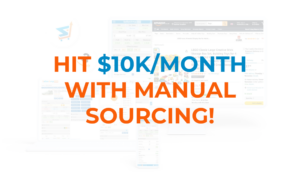Arbitrage 101: A Beginner’s Guide For 2025
Starting a new arbitrage business is one of the easiest ways to dive into the world of entrepreneurship. Whether you’re after a side hustle or dreaming of building a thriving online empire, arbitrage is a fantastic way to make money by spotting price gaps and turning them into profit. Below, we’ll walk you through getting started, but if you prefer to watch a video, check out an awesome guide by seasoned expert Miles below!
So, What is Arbitrage?
Simply put, arbitrage is about buying low and selling high. You find products cheaper in one place and sell them for more elsewhere! Here are two popular ways to do it:
- Retail Arbitrage: Scour physical stores for discounts and resell those items online.
- Online Arbitrage: Shop online for bargains and sell them on platforms like Amazon for a tidy profit.
Both approaches work well—it’s all about finding what clicks with your lifestyle and schedule. Choose one method, or do both! The beauty of arbitrage is that you can do as much or as little as you want.
Why Start an Arbitrage Business?
Arbitrage comes with loads of perks:
- Easy to Start: You don’t need a fortune to get rolling or have any existing knowledge of reselling.
- Flexible: Work from anywhere and set your own hours, perfect for fitting around family!
- Scalable: Start small and grow as you learn the ropes, or stay small if that works best for you.
- Quick Results: See profits roll in – Fast!
Step 1: Research and Prep Work
Before jumping in, lay the groundwork:
- Know Your Market: Check out trends, seasonal hot sellers and profitable niches. Tools like SellerAmp can help you spot opportunities, with a ton of sourcing info on our YouTube and website!
- Pick a Platform: If you’re going the online route, Amazon is a fantastic option. Learn about FBA (Fulfilled by Amazon) —it takes the hassle out of shipping and customer service, or sell from home via FBA (Fulfilled by Merchant) to increase your bottom line.
- Understand the Rules: Get familiar with policies, gated items and fees so there aren’t any nasty surprises!
Step 2: Set Up Your Business
To get started:
- Sign Up: Create an Amazon Seller Central account and download SellerAmp SAS. (Psst! You can sign up for a FREE two week trial HERE)
- Budget Wisely: Decide on an initial investment and stick to budget. Don’t overdo it—start small and test the waters.
- Stay Organized: Consider setting up a separate bank account and email address to be used only for your business.
Step 3: Find Products to Sell
Sourcing great products is key. Here’s how to nail it:
- Retail Arbitrage:
- Hit up stores like Walmart and Target for deals, but don’t sleep on thrift stores either.
- Use tools like SellerAmp to easily scan items with your phone and see if they’re profitable, before spending your hard earned cash.
- Clearance sections are goldmines—just keep in mind each stores policy on buying discount items in bulk.
- Online Arbitrage:
- Hunt for bargains online, there are endless sites to check.
- Use the SellerAmp SAS browser extension to instantly analyze profit potential and ROI.
- Stick to items that meet Amazon’s guidelines and avoid restricted categories or gated brands while you’re starting out.
Step 4: List and Sell Your Products
Got your inventory? Now get those sales rolling:
- Create Great Listings: Use clear, keyword-rich titles and descriptions. High-quality images make a huge difference!
- Price Smart: Research similar listings and price competitively.
- Get your timing right: Holidays like Easter, Thanksgiving and Christmas are peak selling periods. Be sure to prepare in advance.
Step 5: Keep Things Running Smoothly
Consistency is key. To keep your business humming:
- Stay Stocked: Keep track of your inventory and restock top sellers before they run out.
- Keep Customers Happy: Set realistic shipping estimates and stick to them, monitor customer feedback and reviews to maintain your reputation.
- Review and Improve: Check what’s working and what’s not. Learn from any mistakes and use them as way to improve.
Watch Out for These Pitfalls
Every business has challenges, here’s what to avoid in arbitrage:
- Forgetting Fees: Amazon takes its cut, so be sure to factor in all the fees when pricing so your profits stay healthy.
- Buying Too Much: Don’t overstock on items until you know they’ll sell consistently.
- Ignoring Trends: Stay in the loop with what’s hot and stay proactive to avoid sitting on unsold inventory.
Starting an arbitrage business is an exciting way to earn money while enjoying the freedom to work on your terms. With a bit of research, smart tools like SellerAmp and a can-do attitude, you’ll be well on your way to turning bargains into profits. Success takes time, but with consistency and effort, you can build a business that grows with you. Ready to get started? Hit the button below sign up for a FREE two week trial of SellerAmp SAS and start sourcing your way to success!




